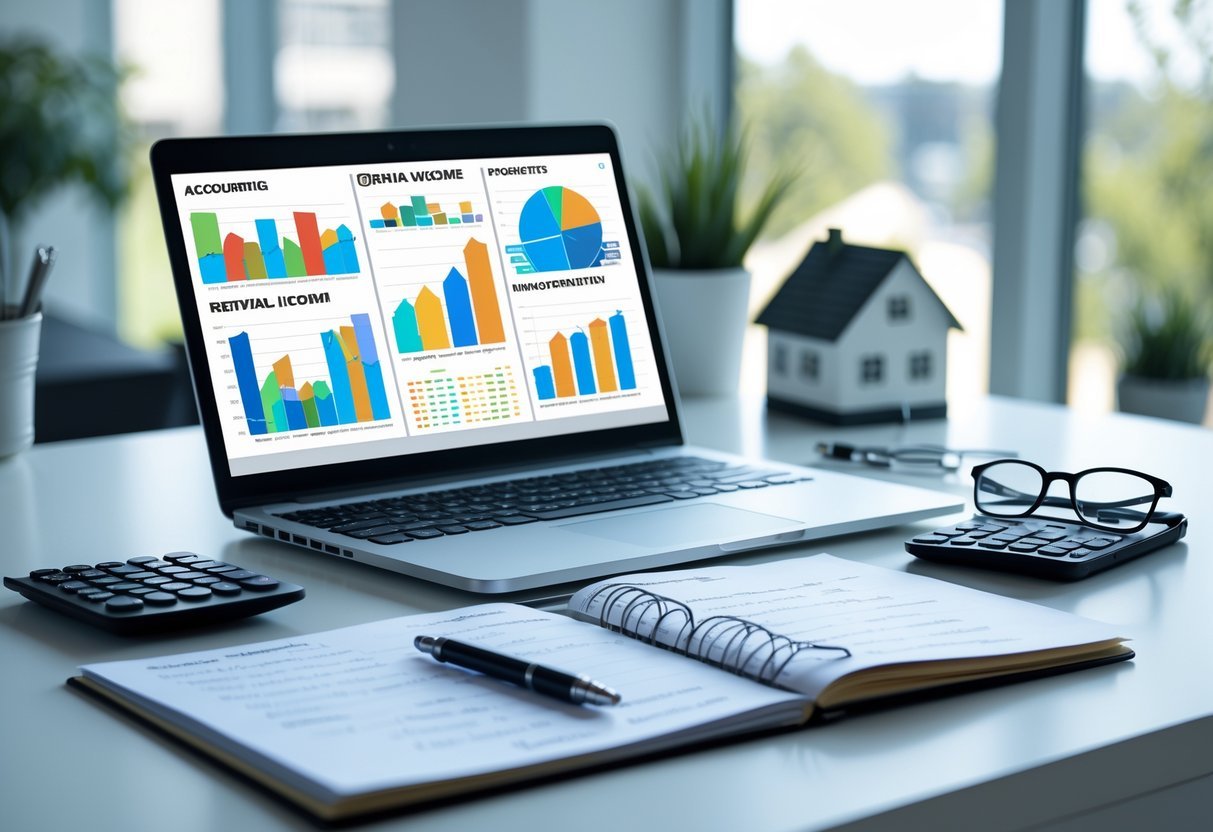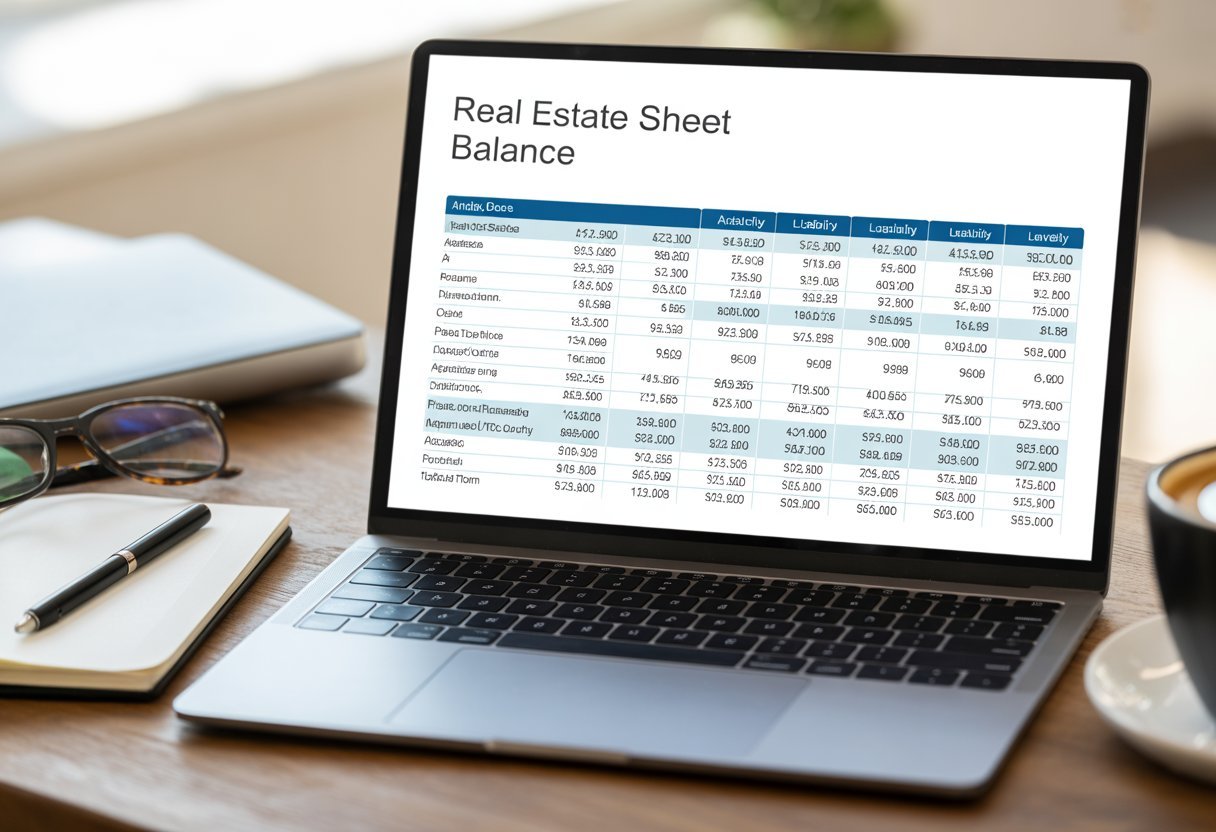Managing the finances of your rental property business requires organization and accuracy. A well-structured chart of accounts is essential for tracking income, expenses, assets, and liabilities so you can clearly see your property’s financial performance. Without this organized framework, it’s easy to miss out on tax deductions, overlook important transactions, or make costly errors during tax season.
With the right setup, you’ll have a detailed and accessible overview of where your money is coming from and where it’s going, making everything from budgeting to working with your accountant much easier.
Key Takeaways
- Learn the basics of creating a rental property chart of accounts
- Find out what categories and accounts to include for your business
- Access example templates to speed up your setup
Understanding the Chart of Accounts for Rental Property
A well-structured chart of accounts is the backbone of your rental property accounting system. It categorizes and organizes financial information so you can easily track income, expenses, and asset values specific to your properties.
Key Components of the Chart of Accounts
A rental property chart of accounts typically includes main categories for assets, liabilities, equity, income, and expenses. Assets cover items like bank accounts, property values, and security deposits. Liabilities might include mortgages, loans, or tenant deposits held in trust by you as the property owner.
The income category should include rent payments, late fees, and any additional services or reimbursements you collect. Expense accounts cover repairs, property management fees, utilities, insurance premiums, property taxes, and maintenance costs. Equity tracks owner contributions and retained earnings. Keeping these categories clearly defined in your general ledger helps ensure each transaction is recorded in the right place for reporting and analysis.
Here’s a simplified example:
| Category | Typical Accounts Included |
|---|---|
| Assets | Bank Account, Property, Security Deposit |
| Liabilities | Mortgage, Tenant Deposits |
| Equity | Owner Equity, Retained Earnings |
| Income | Rent, Late Fees, Application Fees |
| Expenses | Repairs, Utilities, Management Fees |
Purpose and Benefits for Property Management
A detailed chart of accounts brings transparency to your property management by helping you map out every penny that flows in or out. It simplifies financial tracking by grouping similar transactions, reducing confusion, and minimizing errors when recording in your general ledger.
With a clear structure, you can generate accurate reports such as the income statement and balance sheet, both vital for understanding profitability and cash flow. This ensures compliance with accounting standards and makes preparing for tax season less stressful. Streamlined accounts also make it easier to see how different properties or expense categories are performing, allowing for smarter decision-making.
According to Stessa’s guide to rental property chart of accounts, customizing your chart of accounts for your specific properties can lead to improved financial clarity and provide audit-ready records.
How Chart of Accounts Relates to Rental Property Accounting
The chart of accounts forms the framework for your complete accounting system. Each transaction—whether it’s collecting rent, paying for repairs, or making a mortgage payment—is recorded using these defined accounts. This system allows your general ledger to reflect all financial activity in an organized and accessible manner.
For rental property owners, this structure ensures each property’s performance can be evaluated individually or as part of a portfolio. This level of organization supports budgeting, helps you spot trends in income or expenses, and provides all required financial information for lenders or investors.
As outlined in this comprehensive guide, a properly set up chart of accounts is essential for accurate property management accounting and meeting reporting requirements for your rental business.
Setting Up a Chart of Accounts for Rental Properties
Establishing a detailed chart of accounts is foundational for tracking the full range of your rental property finances. Proper structure improves transparency, simplifies tax preparation, and supports decisions that directly impact cash flow.
Organizing Income and Revenue Categories
Your chart of accounts should start with specific income and revenue accounts. This allows you to monitor the effectiveness of your property’s earning activities and see cash flow trends.
Include separate income accounts for rent received, late fees, laundry or vending machines, pet fees, and parking. Recording these streams individually helps you assess which amenities generate the most revenue and identify any shortfalls quickly.
When customizing your list, tie revenue categories closely to IRS Schedule E rules to make year-end reporting easier.
Tracking Expenses and Operating Costs
Expense tracking is central to understanding profitability. Your chart should break out major operating expenses, direct expenses, and other recurring costs tied to property management.
Key categories often include real estate taxes, repairs, maintenance, insurance, property management fees, mortgage interest, utilities, advertising, legal or accounting fees, and supplies. By keeping these expense accounts separate, you can see which costs are rising and where to focus on savings.
For indirect costs, such as office expenses, group them distinctly from direct costs like repairs or cleaning. Accurate expense tracking not only eases tax time but also reveals operational inefficiencies.
Managing Assets, Liabilities, and Equity
Organizing asset, liability, and equity accounts is essential for a comprehensive view of your property’s financial position. List your main assets, including the property itself, furniture or appliances, and cash or bank accounts.
Include liability accounts for loan balances, security deposits owed, and accounts payable. This shows at a glance how much your business owes versus what it owns.
Set up equity accounts to record your original investments and track how profits are retained or distributed over time. Clear records make it easier to reconcile your books and prepare financial reports for lenders or investors.
Leveraging Accounting Software and Excel Templates
Using accounting software streamlines the process of setting up and maintaining your chart of accounts. Programs like QuickBooks or specialized property management tools can help you automate income, expense, and journal entries.
Many landlords begin with an Excel chart of accounts template for rental properties to organize categories before migrating to software. Templates often include common account names and sample structures you can customize.
Choosing the right platform ensures you stay organized as your portfolio grows and makes it easier to generate reports such as cash flow statements or expense summaries on demand. Digital tools also improve accuracy and minimize manual errors in your accounting workflow.
Frequently Asked Questions
Creating an accurate chart of accounts for your rental property is essential for effective bookkeeping and tax preparation. Each account category and organizational method has a direct impact on your ability to track income, expenses, assets, and liabilities.
How should a chart of accounts for rental property be structured?
Your chart of accounts should separate assets, liabilities, income, and expenses. This structure helps you clearly report different financial activities such as rental income, repair costs, and mortgage payments. Accurate categorization is critical for preparing forms like the IRS Schedule E.
Which specific accounts must be included in a rental property chart of accounts?
Key accounts to include are rental income, security deposits, property management fees, maintenance and repairs, mortgage interest, insurance, property taxes, and depreciation. Including these accounts ensures your records align with tax requirements and financial reporting standards.
What are the best practices for organizing rental property expenses in a chart of accounts?
Group expenses under broad categories like repairs, maintenance, insurance, and property taxes. Use sub-accounts to separate recurring costs from one-time expenses. Keep categories consistent year to year to make tax filing and financial reviews more straightforward. For detailed guidance, review this resource on setting up a chart of accounts for rental properties.
Can you provide an example of a rental property chart of accounts in QuickBooks?
A basic QuickBooks setup might include accounts such as Rental Income, Security Deposits Held, Mortgage Interest, Repairs and Maintenance, Property Taxes, Insurance, Utilities, and Owner Equity. For a walk-through, see this video demonstration on setting up a QuickBooks chart of accounts for rental property.
Is there a template available for a property management chart of accounts?
Ready-to-use templates exist and can be adapted to suit your property’s needs. These templates help you cover all necessary income and expense categories with minimal setup. See a detailed property management chart of accounts template and guide for a practical starting point.
How does the accounting method affect the setup of a chart of accounts for rental property?
Your accounting method—cash or accrual—determines when you recognize income and expenses. Under the cash method, you record entries when money changes hands. The accrual method records transactions when they are earned or incurred, which may require additional accounts for receivables and payables.




